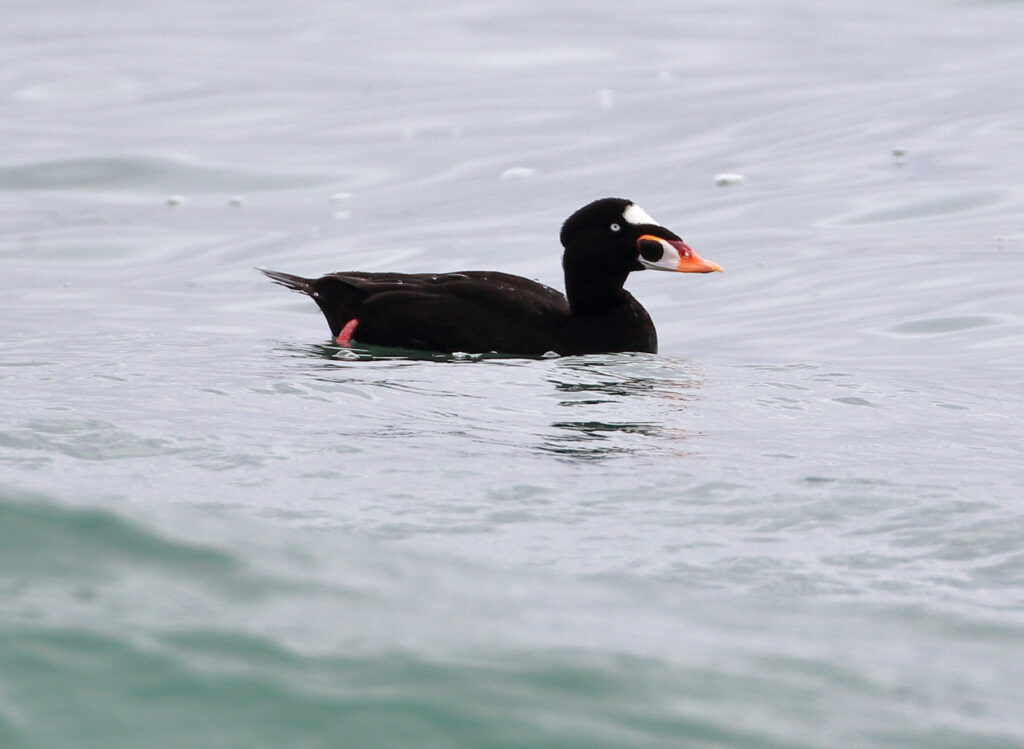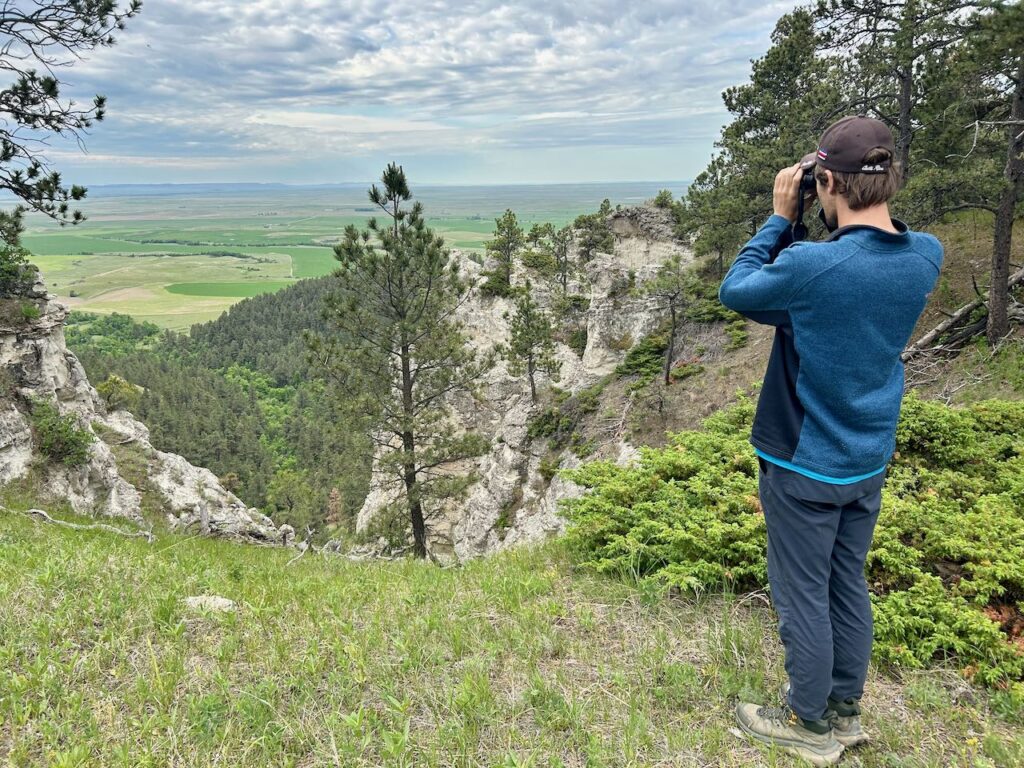The week before Thanksgiving, my family had the opportunity to visit a place that featured prominently in my childhood—Cape Cod, Massachusetts. We headed to Boston so that I could accept a big award for my picture book, Border Crossings, but the trip provided many piggybacking opportunities. These included a chance to look at colleges for Braden’s sister, Tessa, and to meet up with Braden for Thanksgiving. After Amy, Tessa, and I spent a few days in Boston, in fact, Braden drove down from the University of Maine and whisked us off to the Cape.
I spent parts of many summers in Woods Hole on the Cape. My father did his post-doc at WHOI—the Woods Hole Oceanographic Institution. My step-father spent dozens of summers in Woods Hole doing research and teaching classes at the MBL—the Marine Biological Laboratories. I have many fond (and some not-so-fond) memories of those summers, but had not been back for (gasp) 45 years! I looked forward to revisiting old haunts and showing my family some of the places that had shaped my childhood. Naturally, Braden and I also considered the birding possibilities.

When Braden first mentioned going to Race Point near Provincetown, I hesitated. I recalled driving up there as a ten-year-old and didn’t relish spending an extra four hours of our vacation in a car. When Braden started telling me what we might find there, however, I quickly changed my mind.
Race Point, it turns out, is one of the nation’s premiere places for spotting seabirds from land. A map reveals an obvious reason: Cape Cod juts miles out into the Atlantic Ocean, and the tip—Race Point itself—is surrounded on three sides by the sea. This means that birders have an opportunity to see both regular beach-type birds and many species that only rarely show up near land. Braden and I especially hoped to see jaegers, “tube noses” such as shearwaters, and any interesting gulls or ducks that happened to be around.
After a delicious breakfast at Liz’s Café in Provincetown, Braden and I left Amy and Tessa to explore while we headed off to the parking lot near Race Point lighthouse. As soon as we approached the beach, we spotted Northern Gannets soaring above wild, wind-raked seas. I’d only ever gotten a brief look at a NOGA before, when Braden and I had visited Acadia National Park three years before, so right away the drive up to Provincetown redeemed itself!
However, the excitement was just beginning.

As wind and sand pelted us, groups of White-winged and Black Scoters, Common Eiders, and Long-tailed Ducks skimmed the waves just offshore. Some occasionally landed, but most seemed hell-bent for destinations only they knew about. All were birds I had scant experience with, so I soaked up every sighting.

“There’s a Red-throated Loon!” Braden said, pointing to a bird with an exceedingly pale, long neck reaching up from the surface. It wouldn’t be long before we saw several Common Loons, differentiated by blockier heads, chunkier bills, and more black on their faces.

At the top of our To Find list were Great Shearwaters, a potential Lifer for both of us. These birds belong to the “tube noses,” the same group of birds that includes albatrosses, fulmars, and storm-petrels. These birds are truly seafarers, rarely approaching shore. Only a few weeks ago, I had caught a glimpse of Sooty Shearwaters while visiting California’s Point Reyes National Park with my friend Scott. Great Shearwaters had been sighted regularly at Race Point for the past couple of weeks, but alas, we arrived too late to see them today.

We still had plenty of thrilling birds to look at, however. As we trudged the mile and a half through the soft sand toward the very tip of the Cape, flocks of Dunlin and Sanderlings in their winter plumages worked the drifts of foam left on the beach by each encroaching wave. We even saw a group of six Horned Larks, birds we were used to seeing on the backroads of Montana—not here at the end of the world.

Not to be outdone, gulls also put on a show. This was the first time I’d ever gotten to see Great Black-backed Gulls in a natural setting. They are the world’s largest gulls, and I gotta say they looked like they belonged in this rugged, challenging environment.
“Look!” Braden suddenly shouted. “Iceland Gull!” Two of them, in fact. These gulls had until recently been split into Iceland and Thayer’s Gull, and Braden and I had seen the latter at the Helena landfill in Montana. This look was much more memorable as both a juvenile and adult landed near us. Both were gorgeous birds with subtle markings, and they quickly jumped into contention for Bird of the Day honors. Not long after seeing the Iceland Gulls, Braden also spotted a Black-legged Kittiwake. I was grateful he’d gained experience with all of these birds while on the East Coast, because I certainly would have missed a lot of them.

I picked up two Lifers for the day. One was Razorbill, a kind of black-and-white alcid I had dreamed about seeing for years (see our post “All About Alcids”). During our hike to the lighthouse and back, we saw about eighty of these birds in groups, flying low or bobbing up and down in the jagged waves. My second Lifer was a pair of Purple Sandpipers that landed in front of us and shouldn’t have been anywhere near a wide sandy beach. Like its closely-related West Coast cousin the Rock Sandpiper, these are rocky shore birds.

“They must be migrating,” I said, and Braden agreed, though we were well within their wintering latitudes.
As we trudged back toward the car, Braden spotted a fin jutting out of the water. At first we thought it might be the dorsal fin of a shark or orca, but after watching it for a few minutes, we concluded that we were looking at the tail flukes of a larger whale. I’d seen quite a few humpback whales before, and these didn’t look anything like it. “I think it’s a Right Whale,” I said. Later, we learned that Right Whales had been regularly spotted in the area. It was one more unforgettable discovery for a memorable day.
Race Point eBird Checklist: https://ebird.org/checklist/S203601766

































